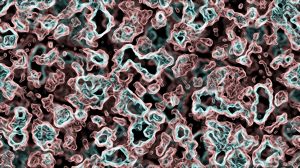Antibiotics have saved countless lives and alleviated human suffering for more than seven decades but, as widely reported, their continued use has led to the emergence of antibiotic-resistant bacteria or 'superbugs' which pose a major threat to humankind.
In ground-breaking work funded by the Australian National Health and Medical Research Council (NHMRC), the researchers focused on the pathogens which are able to resist antibiotic treatments through the formation of biofilms.
"Biofilms occur when bacteria grow together as communities, usually on surfaces, encased within a protective polymeric blanket," Illawarra Health and Medical Research Institute researcher, Dr Mike Kelso, from the UOW’s School of Chemistry and Centre for Medicinal Chemistry, explained.
"These bacterial 'fortresses' are the root cause of most chronic infections, including those occurring on medical in-dwelling devices such as urinary, venous and arterial catheters, orthopaedic prostheses, pacemakers and heart valves, as well as chronic urinary tract and diabetic wound infections and incurable lung infections in cystic fibrosis sufferers. Sadly, there are no effective drugs for treating biofilm-based chronic infections."
In collaboration with researchers from the UNSW’s School of Biotechnology and Biomolecular Sciences, Dr Kelso rationally engineered a new technology known as 'Trojan Horse' drugs.
"These drugs [cephalosporins] are recognised by biofilm bacteria as dangerous and, to defend themselves, they produce an enzyme [beta-lactamase] which would normally degrade the molecules leading to their inactivation," Dr Kelso said.
"However, when the bacteria degrade the Trojan Horse molecules a second molecule called nitric oxide, previously hidden within the molecular structure, is released into the biofilm milieu.
"The nitric oxide then acts as a signal that tricks bacteria into dispersing from their easy-going biofilm lifestyle in pursuit of alternative lodging, convinced that their digs are no longer so cosy.
"Convincing bacteria to disperse from biofilms exposes their Achilles' heel, since they are much more susceptible to traditional antibiotics and immune defences in the dispersed state.
"To put it another way, you need to think like bacteria to defeat bacteria."




-160x160-state_article-rel-cat.jpg)
